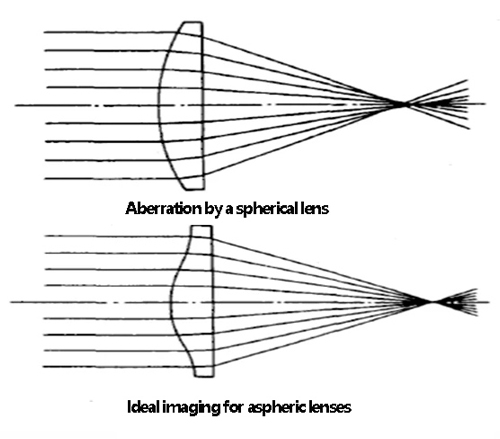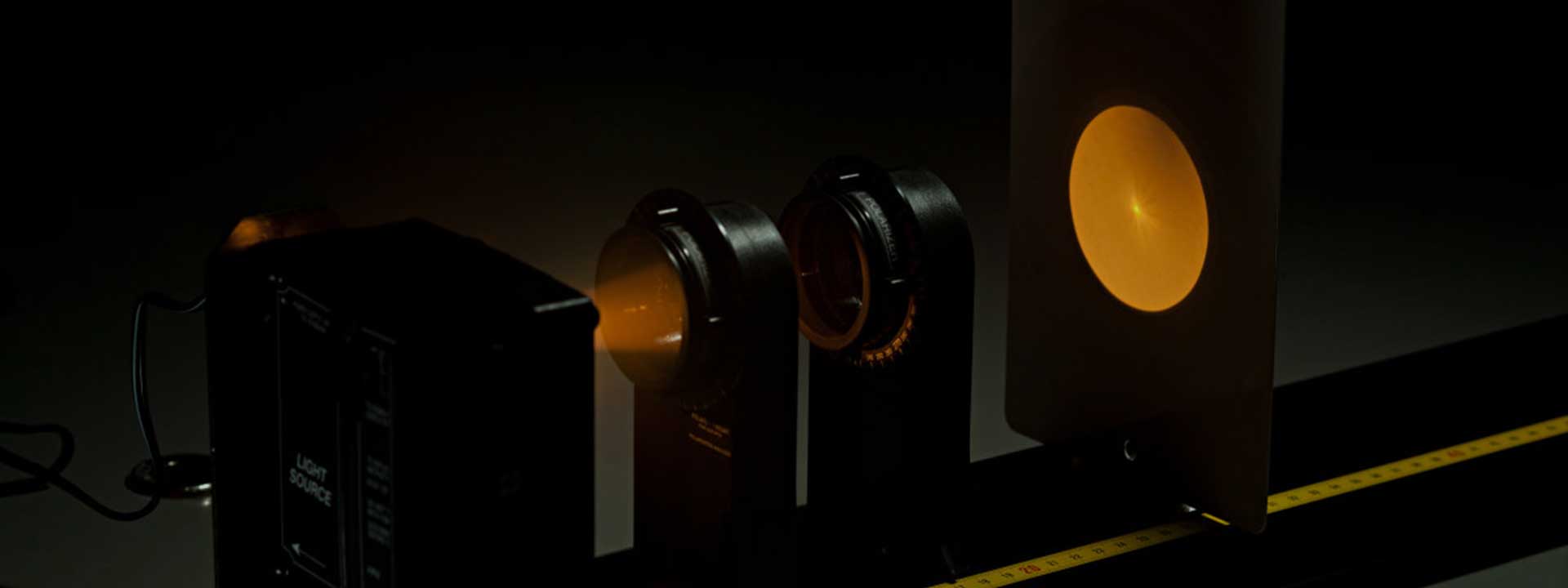Traditional spherical lens will produce spherical aberration. Spherical lenses have an unsatisfactory property (called spherical aberration), which leads to stronger diffraction the farther the light rays are from the optical axis of the lens, and spherical aberration leads to decreased image sharpness. The shape of an aspheric lens is optimized and has excellent imaging characteristics. The main advantage is the ability to correct spherical aberrations. Aspherical lenses can effectively eliminate not only spherical aberrations, but also other forms of aberrations produced by lenses. Aspherical lenses are designed with a single element, helping to reduce the number of lenses in multi-lens optical components. In other words, aspherical lenses have more complex surfaces than traditional lenses that have spheres.
Ecoptik's aspherical drowning and polishing process is similar to that of spherical lenses. First, the shape of the surface is determined by inundation, and then the roughness of the aspheric surface is guaranteed by polishing. The shape deviation is reduced in the process of correcting polishing. Next comes the desertification process. In the polishing process of aspheric surface, the change of curvature radius of aspheric surface is mainly solved. Through continuous fine polishing, adjustment, and other repeated operations, to ensure that each lens meet the accuracy requirements.
The reduction in the total number of components not only helps reduce the size or weight of the system, but also simplifies the assembly process. As a result, the design is more compact and more powerful than similar systems based on spherical lenses. Integrating aspheric into applications such as focusing the output of laser diodes can not only reduce the total cost, but also outperform components using traditional spherical optical lens designs.
The following figure compares the focus points produced by parallel monochromatic light passing through a spherical lens, where the imaging points are blurred due to spherical aberration, and an aspherical lens, where the imaging points are very clear. Therefore, aspherical lens can be used to replace spherical lens group to correct orthodoxies. For example, for zoom lenses that generally use ten lenses, one or two aspherical lenses can be used to replace five or six spherical lenses, which can achieve the same or higher optical effect, reduce production costs, and realize lightweight and miniaturization of the system. In addition, optical systems that reduce the number of lenses also reduce mechanical tolerances, additional calibration steps, and anti-reflection coating film requirements, improving overall system utility and reducing overall system design costs.

The use of aspheric elements in the optical system can improve the performance of the system and reduce the number of optical elements, thus reducing the quality, volume, and compact structure of the instrument. Therefore, aspheric optical elements are often used in optical systems with large field of view, large aperture, high aberration requirements, small structural requirements, or special requirements. Aspheric optical elements are increasingly becoming a kind of very important optical elements because of their excellent optical properties.
